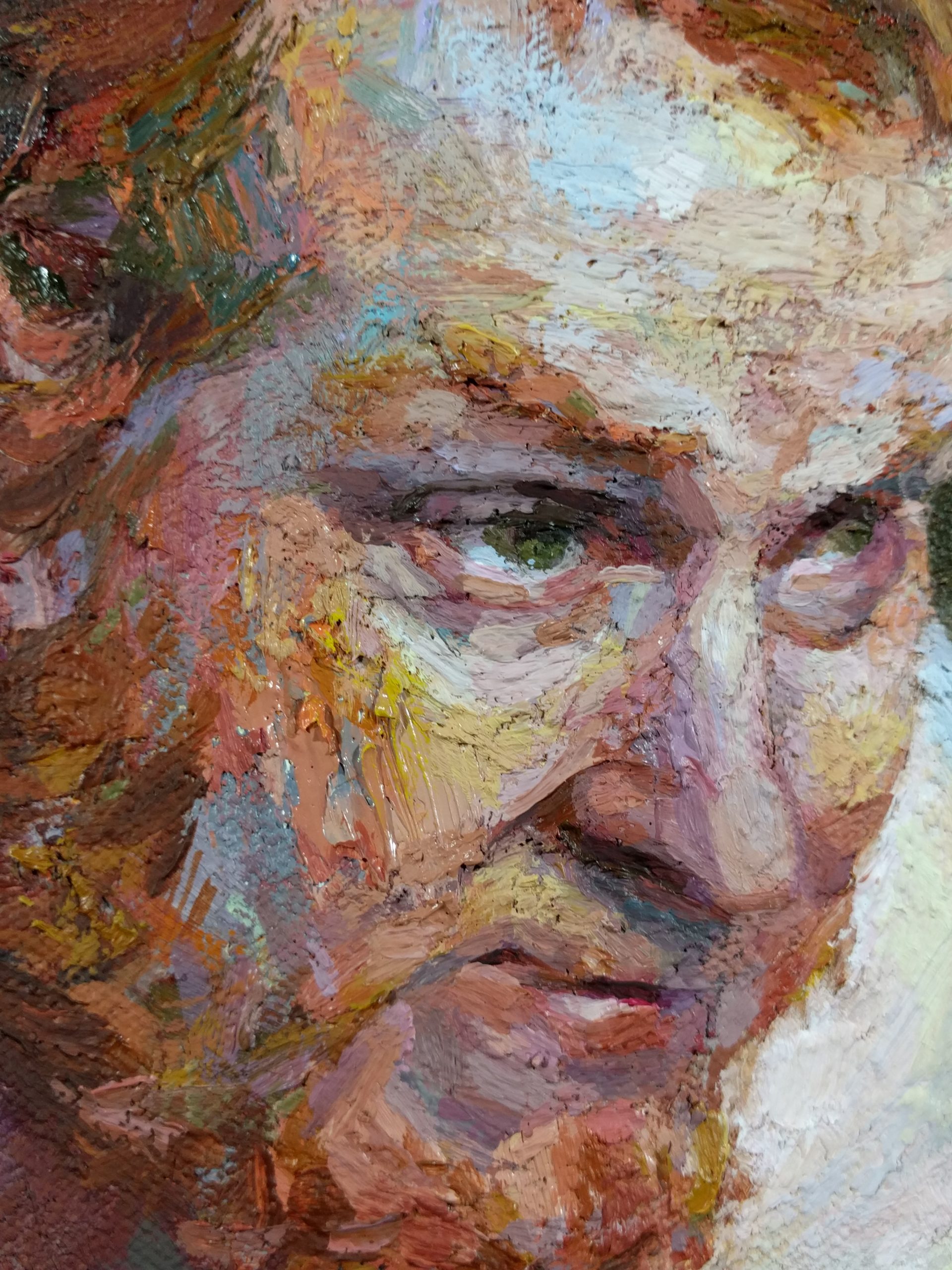The Function of Emotion and Expression in Figurative Oil Painting: An In-Depth Evaluation of Topic and Structure
The interaction of emotion and expression in metaphorical oil painting serves as a crucial lens via which one can analyze the detailed connection in between subject matter and structure. Artists harness various strategies, from color choice to brushstroke characteristics, to cultivate psychological vibration within their works.
Recognizing Emotion in Art
Feeling in art offers as a powerful channel for expression, permitting artists to communicate intricate feelings via their work. In figurative oil paint, this psychological depth is commonly portrayed with the representation of the human number, capturing the nuances of human experience. The selection of subject, color combination, and brushwork all add to the psychological resonance of an item.
Artists frequently bring into play personal experiences, societal problems, or universal motifs to stimulate sensations in the audience. A picture might mirror susceptability, while a vibrant number in motion can symbolize freedom or turmoil. These psychological strings attach the viewer to the artwork, fostering a dialogue that transcends the visual medium.
Furthermore, the interplay between light and darkness can amplify psychological intensity, directing the visitor's look and accentuating specific aspects within the composition. Using structure in oil painting even more adds layers of complexity, inviting a responsive action that improves the emotional experience. Generally, comprehending emotion in art is important for appreciating the subtleties that characterize metaphorical oil paint, as it transforms mere representation right into an extensive expedition of the human condition.
Key Components of Make-up
In the world of metaphorical oil paint, the composition functions as the underlying structure that organizes visual elements and boosts the psychological narrative. Necessary components of structure consist of equilibrium, comparison, centerpiece, and rhythm, each adding to the general impact of the artwork.
Equilibrium describes the circulation of aesthetic weight within the paint, which can be accomplished through balanced or unbalanced setups. A healthy composition offers security, allowing the customer to engage with the item harmoniously - figurative oil painting. Contrast, on the various other hand, includes juxtaposing various elements, such as light and dark or warm and cool shades, to lead the viewer's eye and evoke emotional feedbacks
The centerpiece is critical, as it routes attention to one of the most substantial component of the paint, commonly highlighting the emotional core of the story. Through techniques like shade saturation or positioning, musicians can highlight this location effectively. Rhythm pertains to the repetition of aspects, developing a sense of activity and circulation throughout the structure. By skillfully incorporating these crucial elements, artists can craft engaging and emotionally resonant figurative oil paints that mesmerize and engage their audience.
Topic and Its Effect
Subject matter plays a crucial duty in metaphorical oil painting, as it not only works as the foundation for the narrative yet additionally shapes the viewer's interpretation and emotional interaction with the artwork. The option of topic-- be it a singular number, a group dynamic, or a thematic representation-- straight affects the emotional environment shared to the audience.

As an example, pictures typically stimulate personal connections, exposing the ins and outs of human expression Homepage and personality, while scenes showing public activities can produce a sense of belonging or fond memories. Additionally, the historic and cultural context of the topic improves the audience's understanding, triggering much deeper representations on societal standards, worths, and the human problem.
Various topics additionally create differing levels of engagement; a significant dispute portrayed through figures in stress may evoke sensations of anxiety or empathy, while tranquil landscapes can conjure up tranquility and contemplation. Eventually, the influence of subject in metaphorical oil paint is profound, as it offers as an avenue for emotional vibration, leading the visitor's reaction and analysis, and cultivating a link between the observer and the art work. This interplay is crucial for the successful communication of the musician's intent.
Techniques for Stimulating Feelings
The performance of figurative oil paint in sharing emotions is dramatically affected by the techniques used by the musician. One of one of the most crucial methods is using color theory, where the calculated option of colors can stimulate specific psychological reactions. Cozy shades, such as oranges and reds, often elicit feelings of passion or aggressiveness, while cooler tones like blues and greens have a tendency to evoke peace or unhappiness.
Another vital technique is the manipulation of light and shadow, recognized as chiaroscuro. This method enhances the three-dimensionality of figures, creating remarkable contrasts that can escalate psychological depth. The positioning of light can guide audiences' feelings, highlighting specific aspects of the composition.
Brushwork also plays an essential role; loose, meaningful strokes can communicate energy and spontaneity, whereas smoother strategies could suggest tranquility or accuracy. The arrangement of topics within the structure can affect psychological impact. Close closeness can suggest affection, while range may show seclusion.
Eventually, the combination of these methods enables musicians to craft narratives that Related Site reverberate with the audience, changing a simple visual experience right into an evocative psychological journey. - figurative oil painting

Study of Significant Works
Analyzing remarkable works of figurative oil paint reveals exactly how numerous techniques are employed to evoke effective feelings. One exemplary situation is Edvard Munch's "The Scream," where the altered number and swirling background communicate existential fear. Munch's use color-- vibrant oranges and deep blues-- magnifies the emotional effect, showcasing just how palette choices can shape audience experience.
One more considerable job is Pablo Picasso's "Les Demoiselles d'Avignon." Below, fragmented forms and bold brushstrokes reflect a tumultuous psychological landscape, testing typical depictions of the women number. Picasso's ingenious structure not only catches the audience's attention but additionally welcomes reflection on styles of identity and sexuality.
Additionally, Frida Kahlo's "Both Fridas" offers a poignant expedition of duality and self-identity. The different figures, linked by a common heart, exhibit Kahlo's psychological depth and personal story. figurative oil painting. Her thorough interest to detail and symbolic elements offer to involve customers on a visceral level
These study highlight the profound connection between feeling and structure in figurative oil painting, disclosing exactly how musicians harness technique to communicate complicated sensations and stories that reverberate across time and culture.

Final Thought
In conclusion, the interaction of feeling and expression in metaphorical oil painting substantially boosts the visitor's this hyperlink experience and interpretation of the art work. Through a mindful selection of subject and compositional techniques, artists share profound stories that reverberate on both global and individual levels. The application of color concept, brushwork, and chiaroscuro additional enhances psychological deepness, transforming each canvas into an effective representation of the complexities of the human experience.
In figurative oil paint, this psychological deepness is typically represented with the representation of the human number, capturing the nuances of human experience.Additionally, the interaction in between light and shadow can enhance psychological strength, guiding the audience's look and attracting focus to certain elements within the structure. The use of structure in oil paint additionally adds layers of intricacy, welcoming a tactile response that improves the emotional experience.The focal factor is critical, as it directs attention to the most considerable part of the paint, typically highlighting the psychological core of the narrative. Eventually, the influence of subject issue in metaphorical oil paint is extensive, as it offers as a channel for emotional resonance, guiding the viewer's action and analysis, and fostering a connection in between the art work and the observer.
 Tia Carrere Then & Now!
Tia Carrere Then & Now! Andrew Keegan Then & Now!
Andrew Keegan Then & Now! Dolly Parton Then & Now!
Dolly Parton Then & Now! Megyn Kelly Then & Now!
Megyn Kelly Then & Now! Naomi Grossman Then & Now!
Naomi Grossman Then & Now!